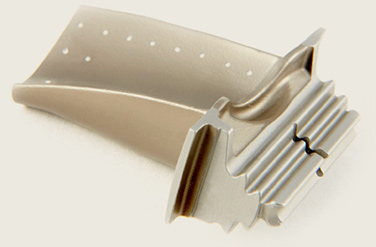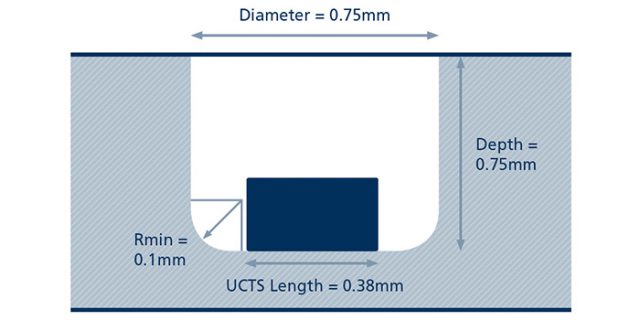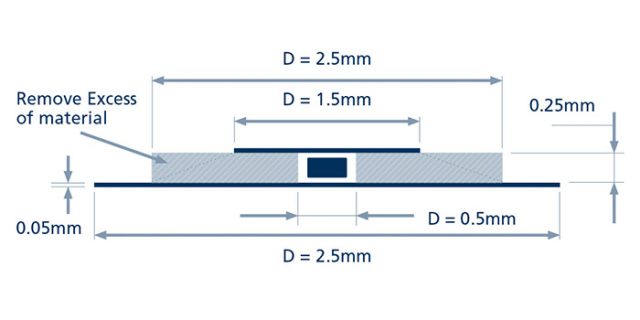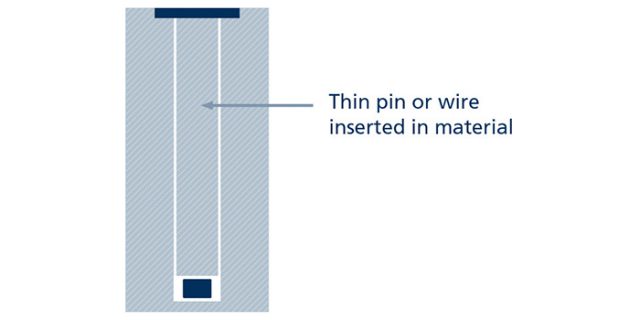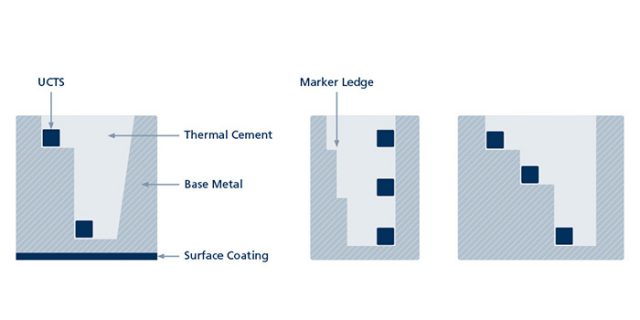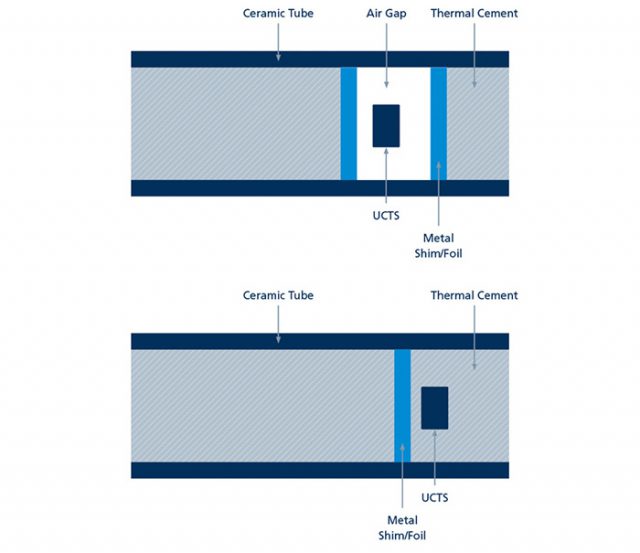4. Gradient temperature measurement
While there are a number of methods that allow for single point measurements on test articles there are fewer techniques available for gradient measurement in engine conditions. Variations of the ‘Stair-step’ or ‘Stacking’ cavity (shown right) allow for consistent placement of multiple UCTS, so that a good quality measurement of the max temperature at different depths through the wall can be taken. It also allows for measurement in close proximity to a coated wall surfaces without alteration to or intrusion into the coating itself.
UCTS could also be used to measure conductive heat flow by using two sensing zones at the ends, separated by a thermal resistance layer with known conductive characteristics. The UCTS would act as a natural HEAT FLUX SENSOR if positioned along the lines of maximum temperature gradient.
Back to top
